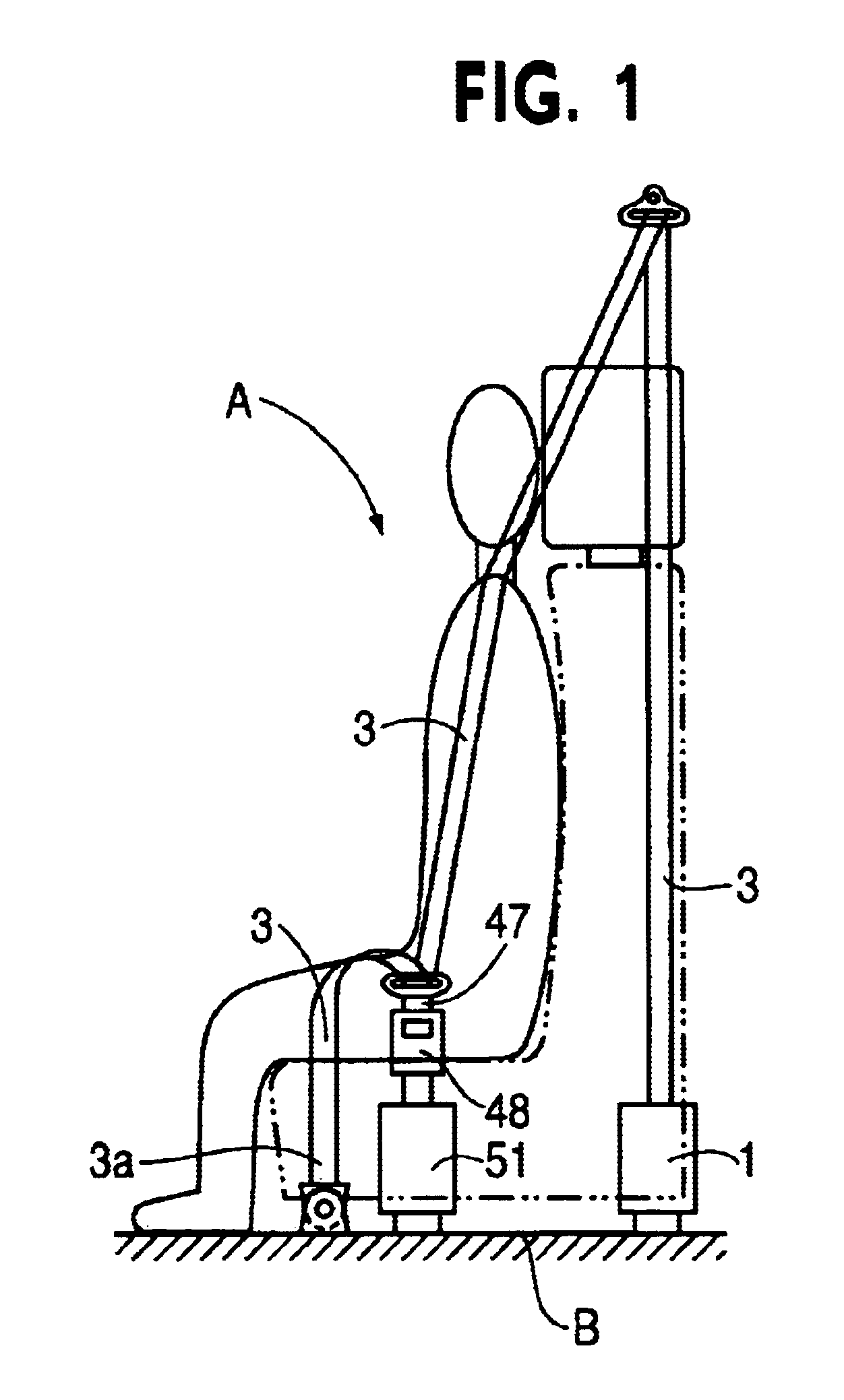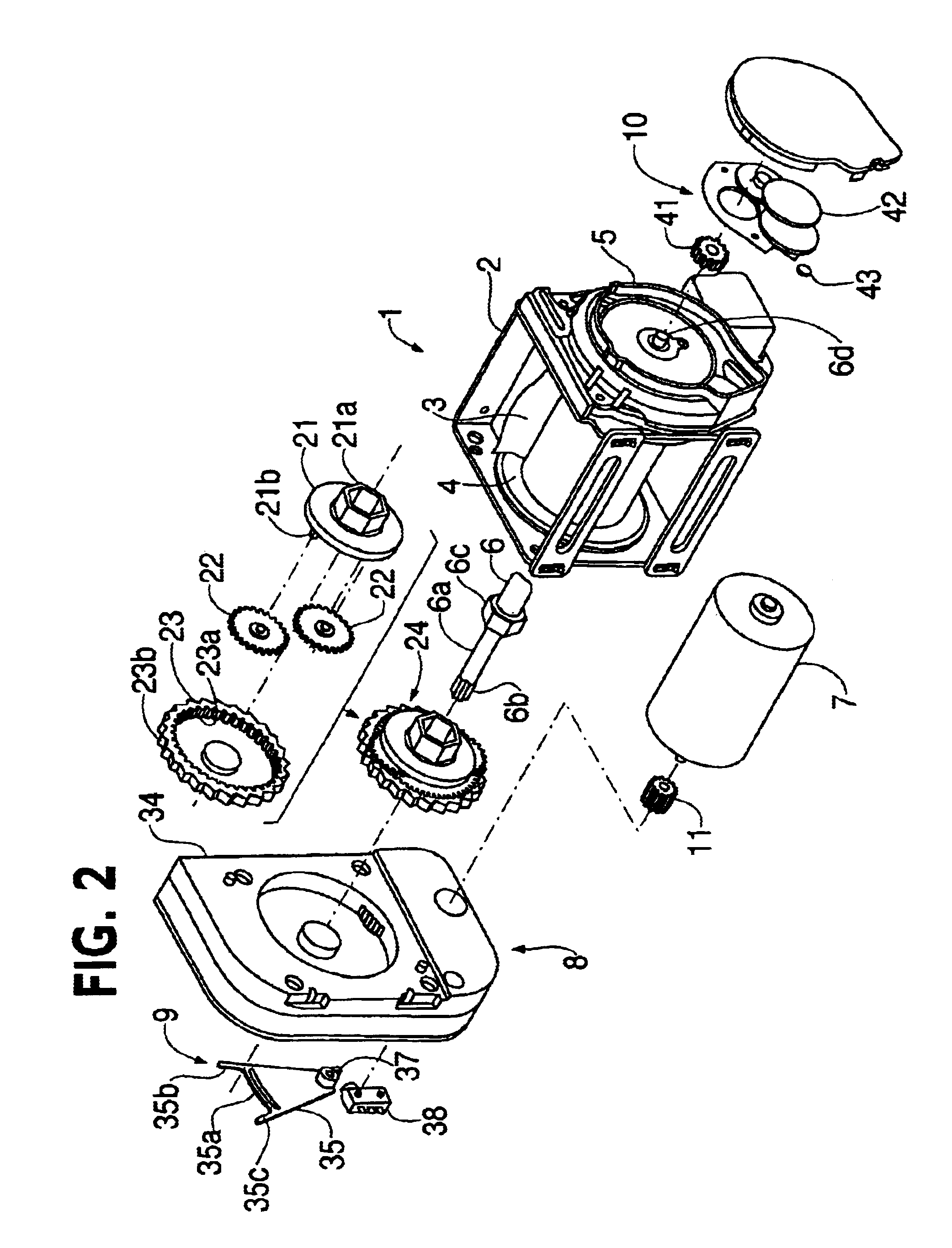Passenger restraining protective system
a protective system and passenger technology, applied in the direction of belt retractors, belt control systems, vehicle components, etc., can solve the problems of difficult installation of the motor-based first pretensioner, large deceleration of the vehicle, and inability to ensure the operation of the second pretensioner, etc., to achieve easy operation control
- Summary
- Abstract
- Description
- Claims
- Application Information
AI Technical Summary
Benefits of technology
Problems solved by technology
Method used
Image
Examples
Embodiment Construction
Embodiments of the present invention will now be described with reference to the drawings.
As shown in FIG. 1, the passenger restraining protective system A of this embodiment comprises a seat belt retracting apparatus 1 secured to a car body B and retracts a webbing 3 having a leading end 3a similarly secured to the car body B only by means of the driving force of a motor; a tongue 47 is slidably supported by the webbing 3; and a buckle 48 which is secured to the car body B via a buckle pretensioner (the second pretensioner in the present invention) 51, and permits insertion and engagement of the tongue 47. The same pretensioner as the second pretensioner in the above-mentioned Unexamined Patent Publication may be used as the buckle pretensioner, or a pretensioner disclosed, for example, in Japanese Unexamined Patent Publication No. 5-193443 may also be applicable, the disclosures of which are hereby incorporated by reference. That is, any pretensioner may be selected so far as it a...
PUM
 Login to View More
Login to View More Abstract
Description
Claims
Application Information
 Login to View More
Login to View More - R&D
- Intellectual Property
- Life Sciences
- Materials
- Tech Scout
- Unparalleled Data Quality
- Higher Quality Content
- 60% Fewer Hallucinations
Browse by: Latest US Patents, China's latest patents, Technical Efficacy Thesaurus, Application Domain, Technology Topic, Popular Technical Reports.
© 2025 PatSnap. All rights reserved.Legal|Privacy policy|Modern Slavery Act Transparency Statement|Sitemap|About US| Contact US: help@patsnap.com



